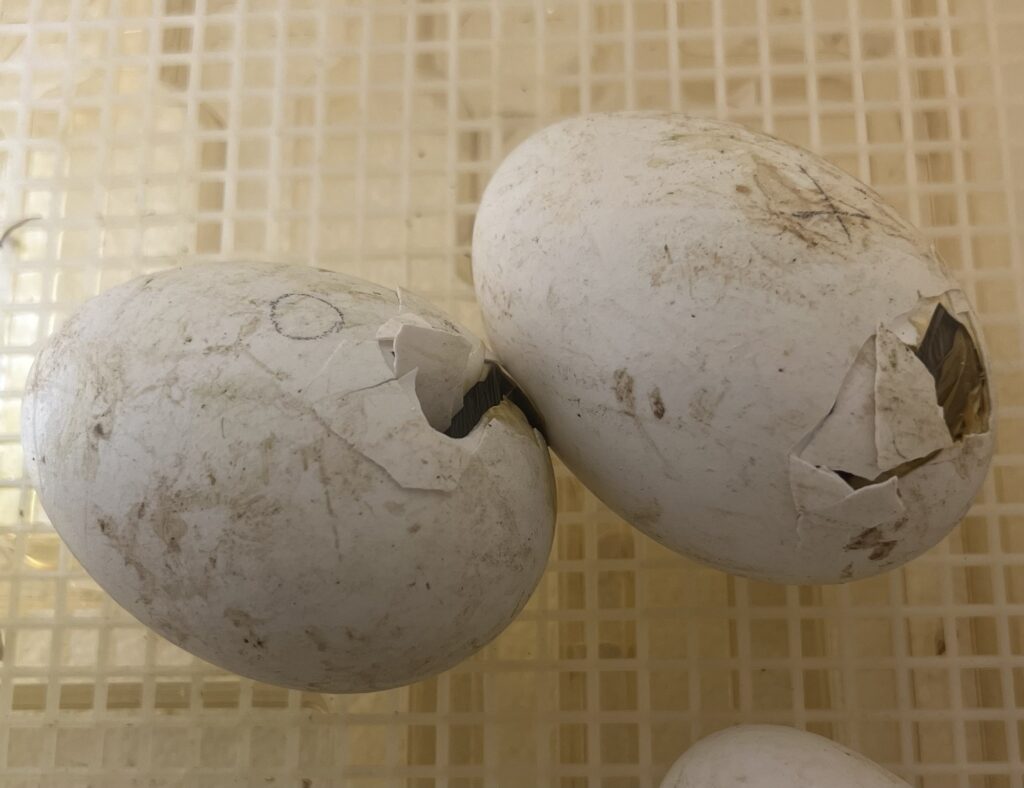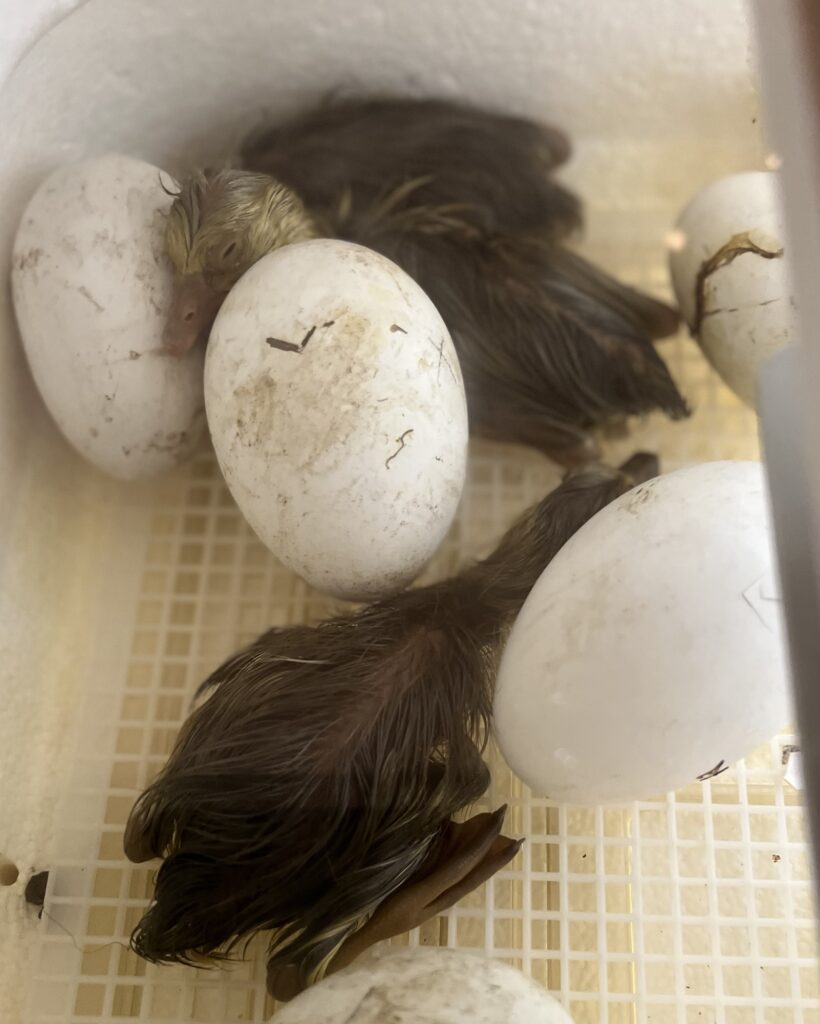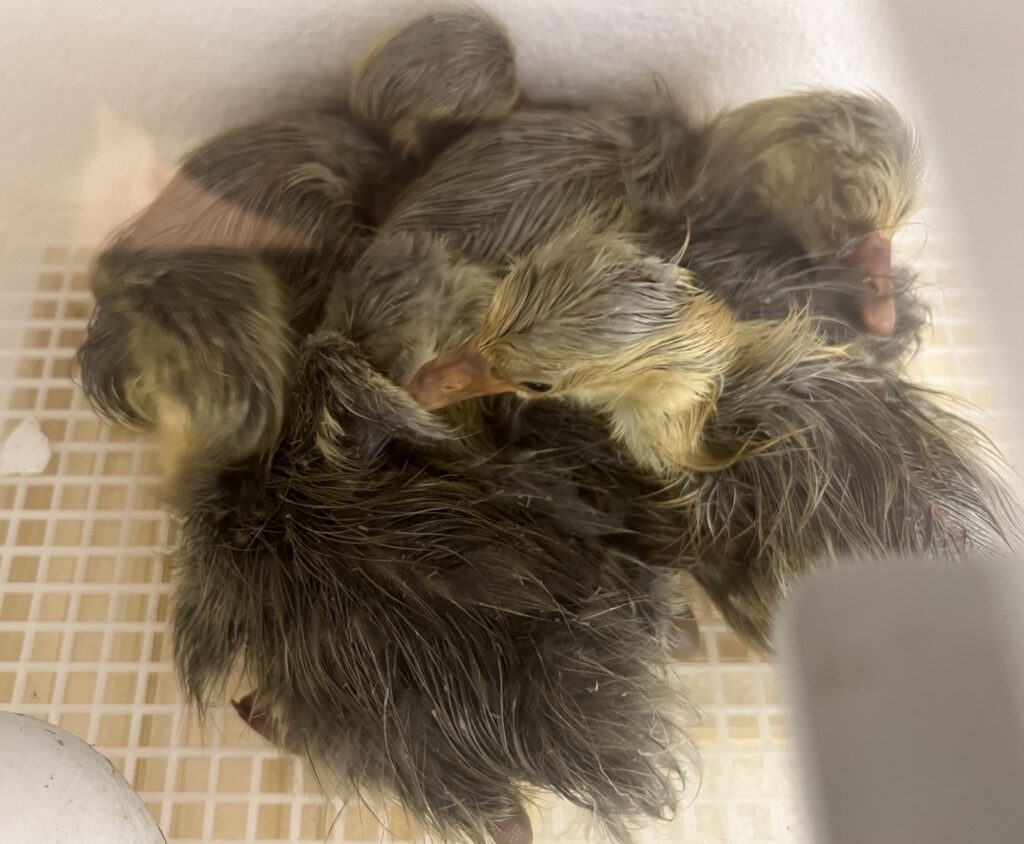
The goslings started externally pipping yesterday (day 29), signaling that hatching was imminent. It’s technically hatch day – day 30 – for the Pilgrims, but a “normal” hatch may begin a couple of days earlier or a couple of days later. How many goslings would be in the incubator when I checked this morning?
Many things can go wrong during a hatch, so the adage “don’t count your chicks before they hatch” is a wise bit of counsel. Even when eggs are externally pipped, meaning that the hatchlings can access air at that point, sometimes they still just can’t manage to get out of the egg. Occasionally, too, they simply expire without any obvious reason. While the signs were certainly promising, the goslings are still eggs until they escape its confines and join this world.
That said, I was very pleased to find that three littles had hatched overnight. They all looked as though they had hatched in the very early morning, as they were still wet. They huddled together, little legs still shaking from the effort of hatching.

Goslings are almost indescribably charming creatures, and words simply don’t do them justice. Their soft peeps, louder when they see and hear me (remember, they’re imprinted on me because they know my voice from when they were in the egg and now they’ve seen me), tug at the heartstrings. And I call them bobbleheads because that’s what they look like immediately after hatch: with big heads on very thin necks not yet muscular enough to hold them up, they struggle to keep their heads upright…so they “bobble”.
There are many other goslings trying to hatch – some even have bills out in the air while they rest and absorb the remainder of their yolks. They need to be allowed the time they require to finish yolk absorption, for any active blood vessels to dry up, and to break out of those very hard shells. Even so, I suspect that the hatch will wrap up tomorrow. At the time of this post, there are now 5 goslings in the incubator.

In the meantime, I’ll be monitoring hatching progress, updating my hatch logs, and adjusting temperature and humidity (as they hatch, the temperature increases, and the humidity really spikes) as needed. Stay tuned for updates!
